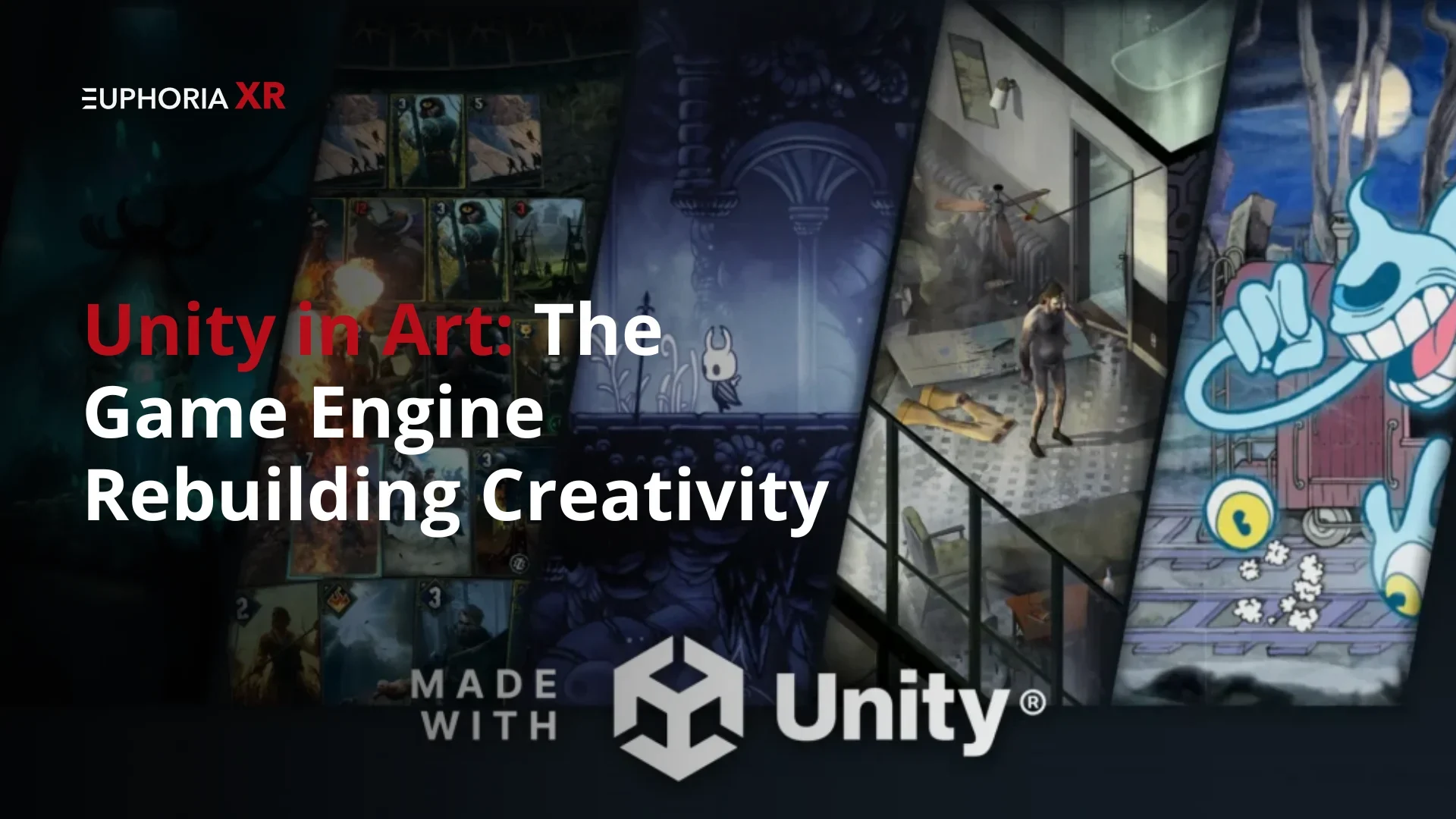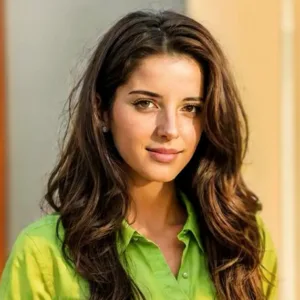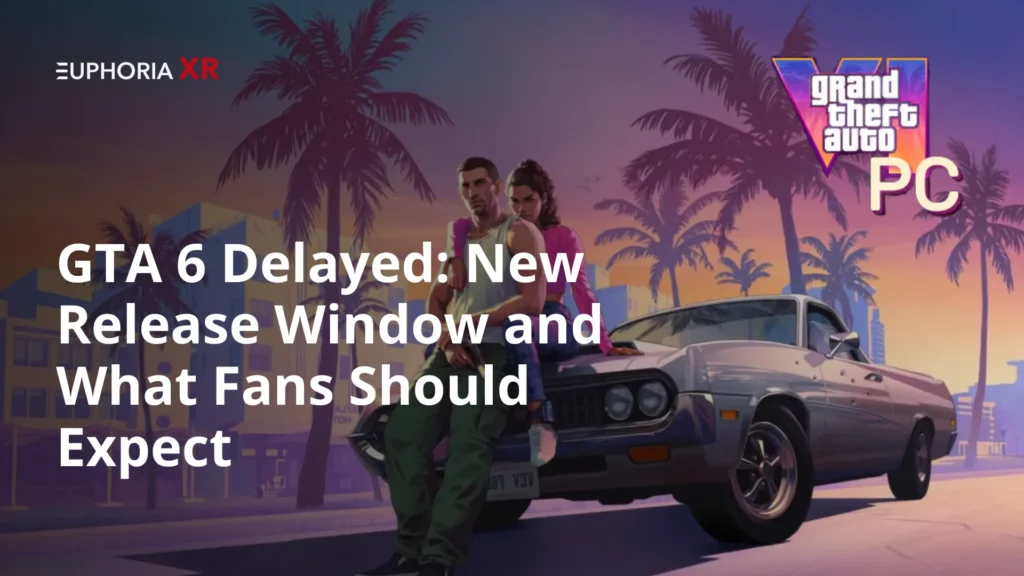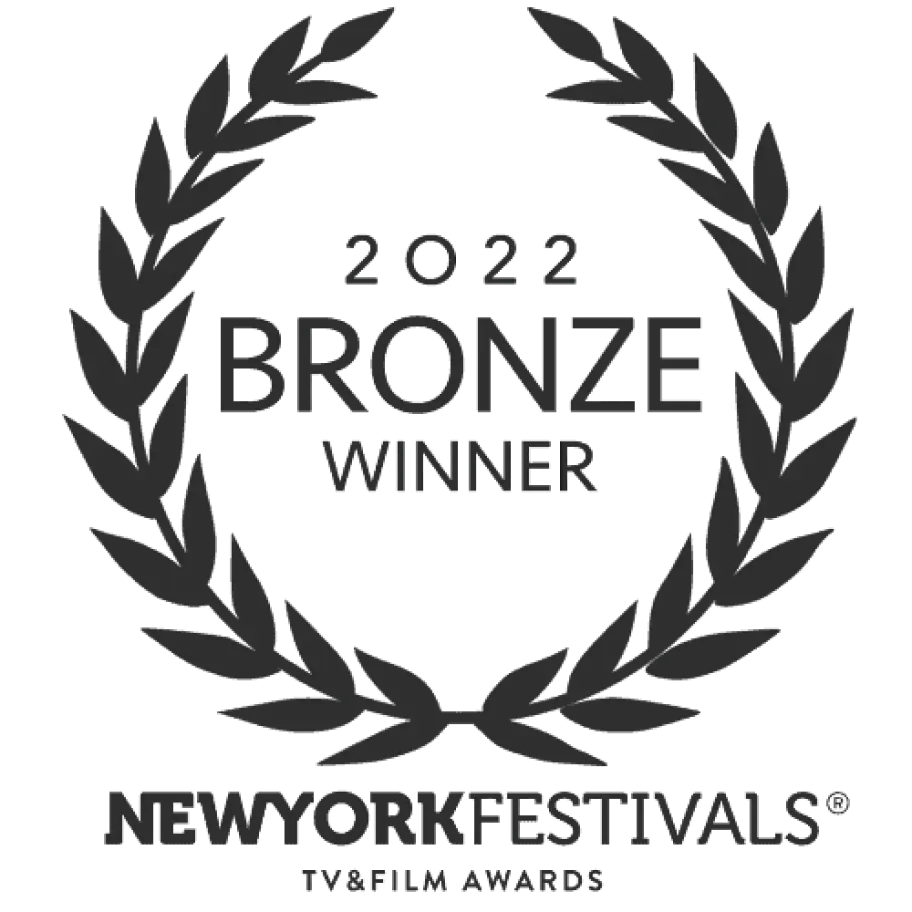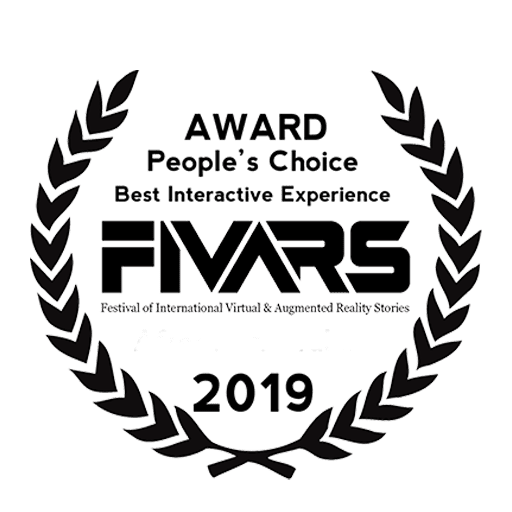Curious as to how this game development tool could enable artists to realize their craziest dreams, such as entering a painting, walking through a sculpture, or seeing a drawing come to life all around you? That is what Unity in Art is. Originally a game development engine, it has since then become an effective creative platform and defined the boundaries between technology and creativity. Immersive VR galleries and interactive museum installations, Unity is also putting the power to create experiences that you live in into the hands of artists.
“Bring your vision to life with a unique Augmented Reality solution. Hire Our Skilled AR Developer Now.”
What is Unity and Why It Matters in Digital Art?
Unity is an engine that enables the creation of cross-platform games, which was first released in 2005 used to power thousands of successful games. However, plotting over the years, it has grown well beyond its origins in crime. Unity is now a real-time 3D creation engine that is applied in industries such as film, architecture, automotive, and, most importantly, digital art.

So why should this be of importance to the artists?
Unity so goes away with the more conventional barriers between art and technology. Skip the hard-learned skills or high costs of having dedicated coding or costly production studios, artists are able to create rich, engaging, interactive experiences through the use of Unity visual tools, drag-and-drop interfaces, and the real-time rendering engine.
The Unity Technologies 2024 Creative Industry Report indicated that more than 60 percent of non-game Unity projects are currently related to arts, entertainment, and media. It means that more painters, sculptors, photographers, and multimedia artists are availing of it so that they can bring their visions alive in a virtual interactive environment.
Unity in Art Beyond Game Development
Although Unity might have begun as a game engine, its benefits can make it useful to the art world as well. Imagine Photoshop, a film camera, and a stage, all in one, however, in 3D and dynamic.
Artists are utilizing Unity to:
- Make interactive artwork installations in which the audience has a chance to shape the work in real-time.
- Construct VR and AR galleries that will enable people to visualize the artwork globally.
- Create generative artworks that vary, depending on motion, audio, or the time of the day.
- Design participatory narrative experiences in which narrative and visuals are presented interactively.
One of the best examples can be seen in The Smithsonian American Art Museum, which, as part of its interactive art, displayed digital sculptures created in Unity, which demonstrates the fact that the engine is no longer developer-only territory, but also an artist’s toolbox.
Create your artistic vision in Unity AR/VR. Partner with us to build your path to success—reserve your
Key Features of Unity That Empower Artists
The unity has its strength in the art world, which involves a combination of effective creative tools and simple interfaces. Such functions enable the artist to concentrate on their idea and not to be lost in the complexity of technical operation chains. A breakdown of the most crucial ones is as follows.
Real-Time Rendering for Artistic Realism
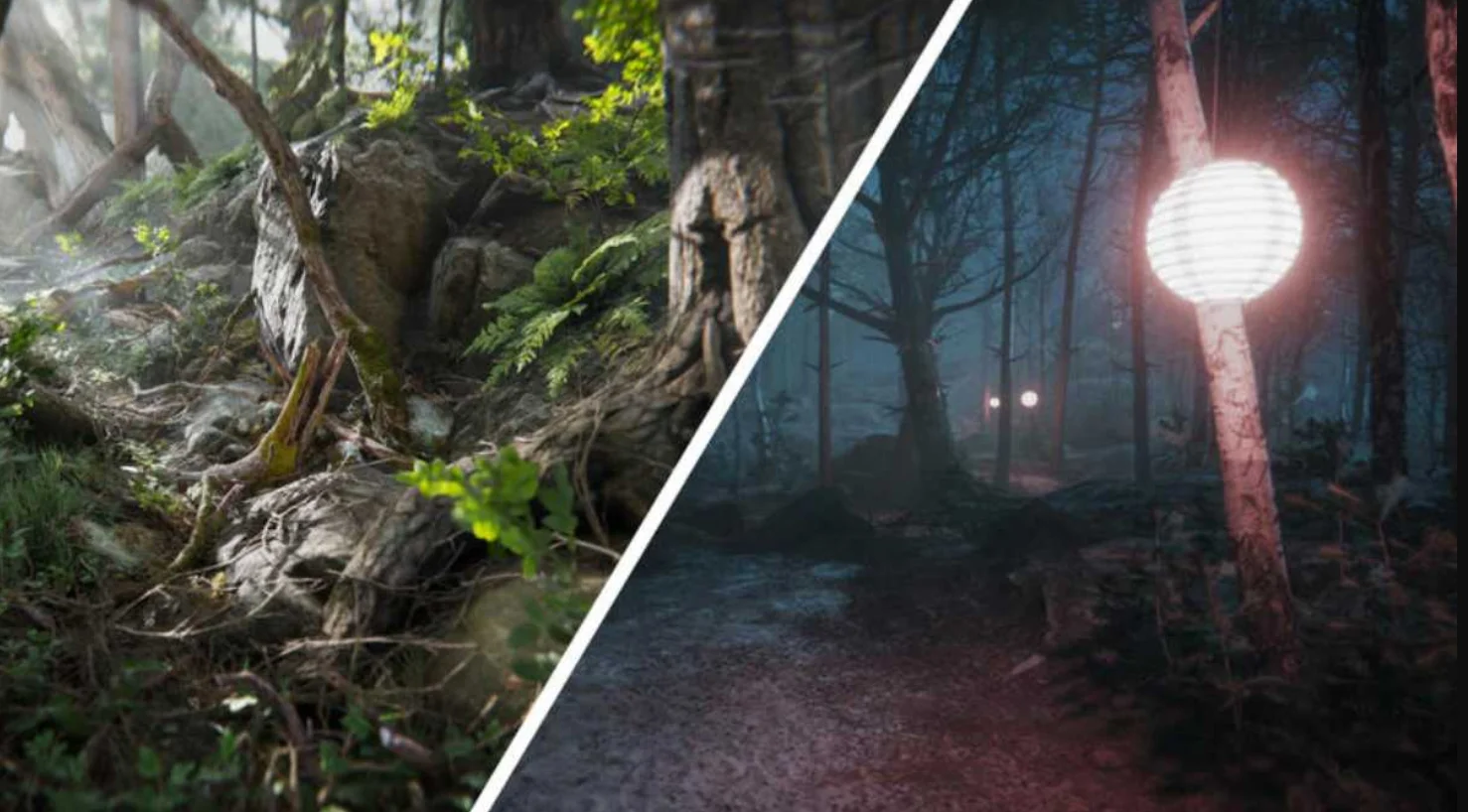
With the old 3D art tools, you may have to wait minutes or even hours for your art to eventually render into the end effect, and show you what it looks like. Real-time rendering transforms that at Unity. Any change in the light, any texture modification, or camera angle change is processed right before your eyes, so you can experiment and make decisions with creativity in real time.
Shader Graph and Visual Effects for Creative Expression
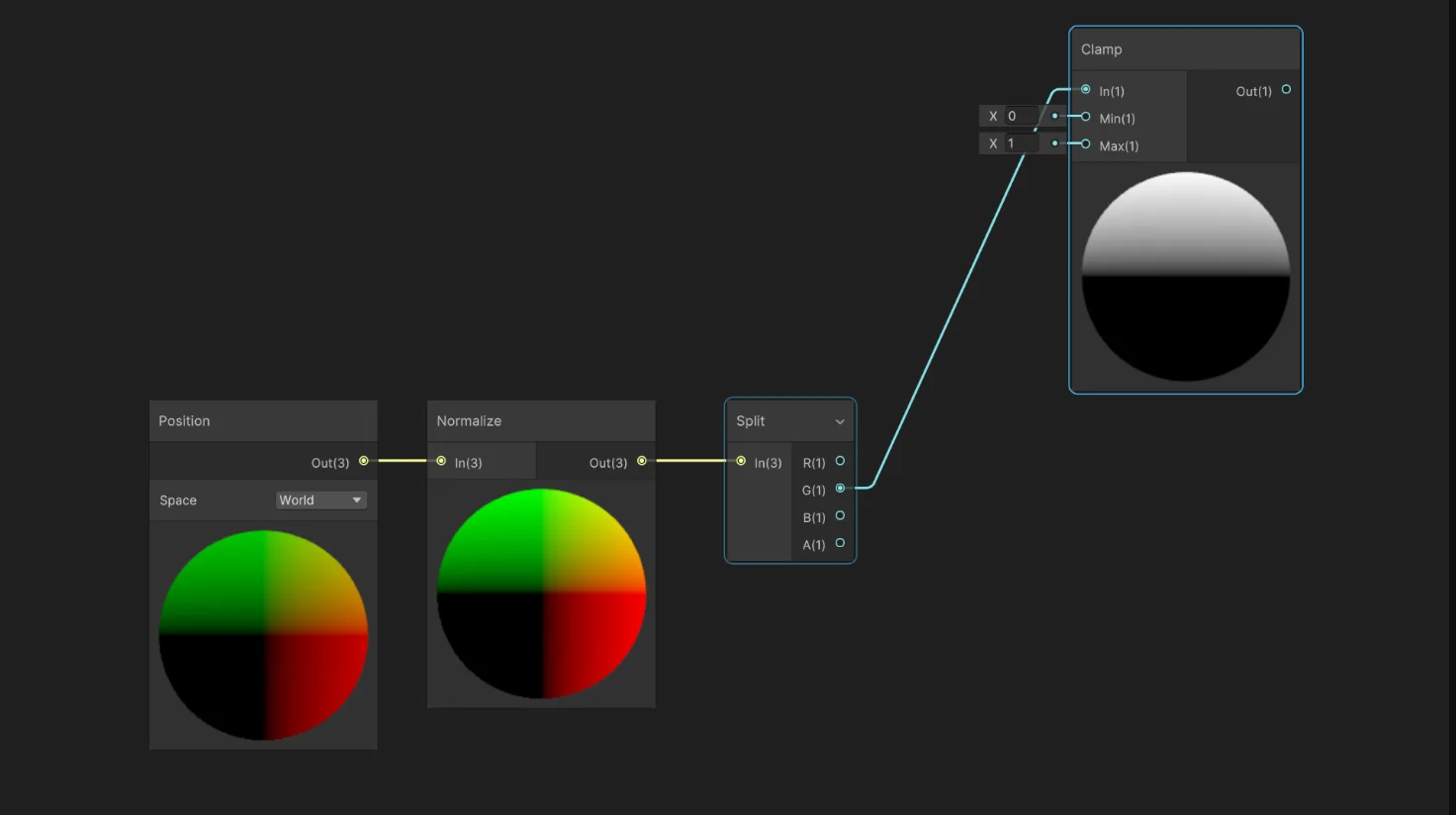
Shader Graph is a visual interface to help Unity users create sophisticated materials and effects in their games, all without writing code. Imagine it as a digital chemistry lab and play with light, texture, and color, and combine them to create your special looks: glowing edges, glass-like textures, strange abstract distortion, etc.
Coupled with Unity Visual Effects (VFX) Graph, artists can make hypnotic particle systems, such as floating clouds, sparkling dust, or color patterns, which change according to how an artist moves or on a given mood of sound. Such tools aim at making the dead art lively.
Cinemachine and Timeline for Storytelling in Art
Art does not necessarily have to be motionless; it can even be cinematographic. Cinemachine is a virtual camera crew within Unity that allows you to position polished and dynamic shots that track action or call attention to certain aspects. It works together with the timeline to order the necessary animation and the camera movement. It also helps to arrange events in order, such as editing a short film within your artificial project.
A combination of the two provides artists with the possibility to create visual works with the elements of pacing, focus, and emotional intensity, ideal for creating art installations or art experiences involving narrative.
VFX Graph for Immersive Visual Experiences
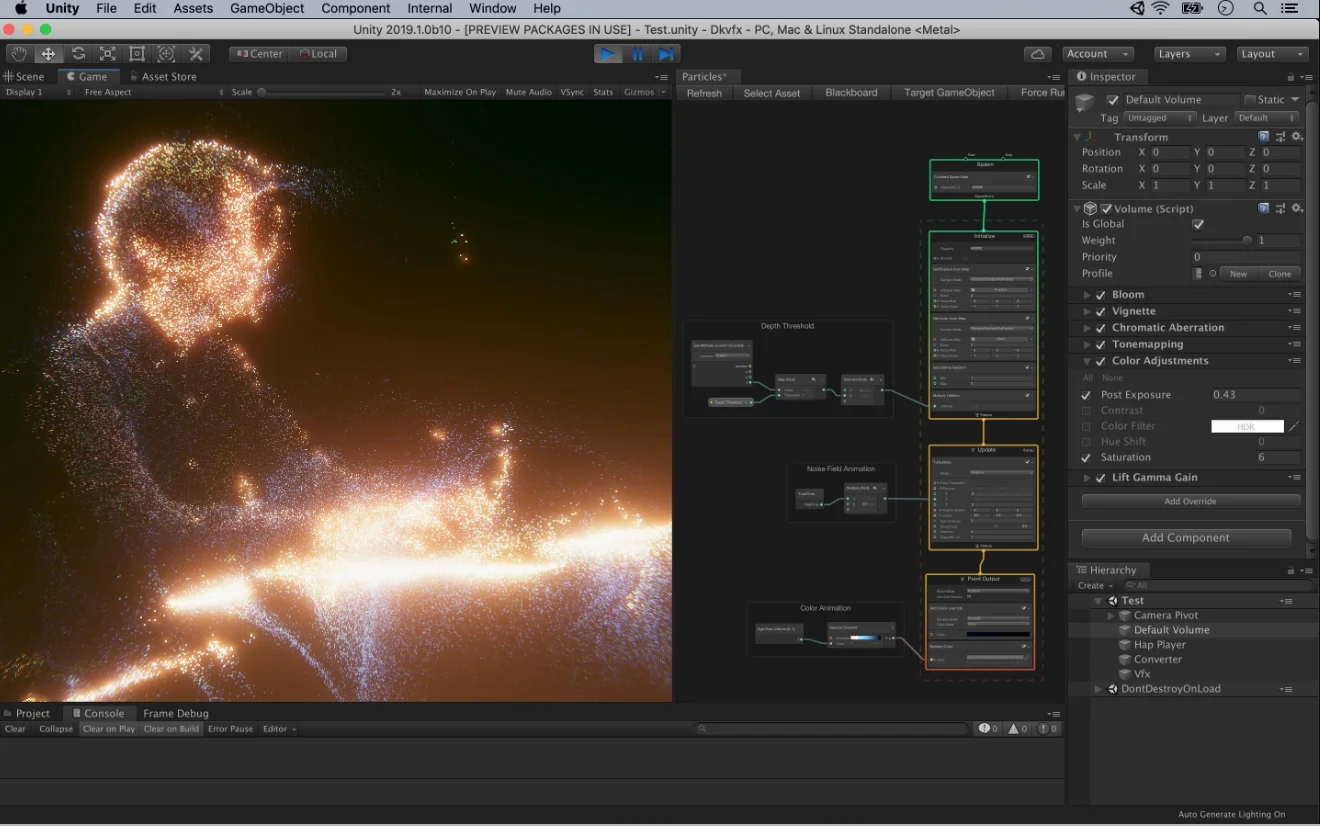
Particle effects in the VFX Graph of Unity are at a new level. With the ability to create complex, changing effects based on real-time information, e.g., one footstep creating ripples or a piece of music varying the particle movement.
As one example, the interactive installation in Amsterdam made with VFX Graph enabled a “digital snowfall” effect, which moved around viewers as they toured the exhibit. It is these types of effects that make a digital artwork into an experience.
How Artists Use Unity in Interactive and Immersive Installations
No longer is interactivity an option in the contemporary art space: the expectation is there. The unity enables artists to convert the passive participation of viewership to active participation. People no longer just stand in front of a painting; they can walk through it, alter the colors in it, or even alter the progression of the story.
Examples include:
Dynamic walls with projection move in various directions when individuals move.
Visuals that react to the sound and provide variations of the abstract form based on either music or ambient sound.
Multi-user installations where humans interact with one another using the work of art in real time.
The combination of art tools and interaction systems at Unity implies that opportunities in the creative field are limited only by imagination.
Unity in Art for AR and VR Experiences
The concept of Augmented Reality (AR) and Virtual Reality (VR) has transformed the experience of how we experience art, and Unity is becoming one of the most attractive platforms to build such experiences.
AR in creative works enables the artists to project digital animation, texture, or objects on the real world via smartphones or AR glasses. Consider that you can hold your phone in front of a sculpture and watch as it changes.
VR in art sends the audience to immersive environments. You may stroll along a 3D painting, enter a fantasy city, or meet abstract forms that react to your eyes.
What makes Unity unique to AR/VR art:
Cross-device delivery: A single project is able to reach multiple platforms, in Meta Quest headsets, as well as mobile AR.
XR Interaction Toolkit: Lets you do natural motions such as grabbing, drawing, or walking without going too deep with the code.
Performance: Makes the experiences smoother even with high-level details of artistic environments.
Indeed, Unity was adopted by the ArtScience Museum in Singapore to develop an AR tour where visitors were able to witness the digital layers of art rise over its real-life exhibits, a practice that led to a 28% increase in visitor dwell times.
Experience AR/VR innovation with EuphoriaXR. Let our Expert VR Developer turn your vision into reality.”
Case Studies: Inspiring Unity Art Projects
To comprehend the contribution of Unity in art, I would like to mention some impressive examples:
VR Gallery Experience: fragments of Reality
A multi-room virtual gallery, each room being attached to a different art movement. The audience was able to respond to the digital brushstones, which initiated animation linked to the period style.
AR Street Art Project, Urban Echo
New York artists designed murals, which contained secret animations that could only be visible after looking through an AR application. People could see characters walk out of the picture onto the street and move among other elements.
Installation (Light as liquid)
A projection mapping installation using Unity to have visitors’ movement influence flowing and glowing colours on the floor and walls.
3D Reconstruction, or as it would be called, Virtual Renaissance
Historical paintings were also repurposed to create VR worlds viewers can explore, with some museums recreating paintings in Unity to provide a first-person view of what life was like in the scene itself.
Unity allows artists to bring together storytelling, interactivity, and visual imagination into experiences that are both immersive and memorable. The projects demonstrate that.
Unity as a Platform for Virtual Galleries and Digital Exhibitions
Exhibition of art in the past required the acquisition of physical premises, installation of illumination, and sending invitations to attend in person. It is different when it comes to unity. It allows artists to develop entirely navigable 3D galleries that visitors can explore using avatars to walk through virtually, view pieces close up, and even touch them-whether they are across the country or the ocean.
Unity-based virtual galleries may contain:
Videos opened by clickable pieces of art, artist commentary, or behind-the-scenes.
Dynamic lights change according to either the time of day or according to visitor preference.
Multi-user environments in which visitors can communicate in real-time with one another.
The advantage? Accessibility. In 2024, a report by the Digital Culture Network concluded that virtual exhibitions can multiply the reach of an artist by a factor of three with reference to physical shows and, more so, with international audiences. This trend is perfect on Unity due to the plugin nature that allows one to publish with ease to the web, desktop, and VR headsets.
Bridging Traditional Art and Digital Innovation with Unity
Unity does not eliminate traditional art; it expands it. Painters will have the possibility of bringing their paintings to Unity and letting the readers walk through the strokes. Photogrammetry allows the sculptors to digitize their work and interact with it. The photographers may also mix motion with stills or add sound, or create 3D depth of the still photos to create a more inviting viewing experience.
This situation in the crosswalk between the digital and physical worlds provides the classic artists with novel opportunities to:
Store their work in electronic format.
Connect to millions of people throughout the world.
Have a play with the impossible styles in the real world.
Among the brightest is the Digital Van Gogh Experience, where the reconstructions of the well-known paintings were created in Unity to allow the audience to enter the picture. It demonstrated that technological resources are capable of adoring classical designs and providing completely new prospects of engagement.
Unity in Art Education and Skill Development
The cohesion is also proving to be an awesome tool in art education. The learning courses on Unity, particularly on how to use the engine as a storytelling and design tool, have become available in universities, art schools, and even on the internet.
Learners are taught:
Create the interactive art spaces.
Try real-time lighting and visual effects.
Deliver to AR, VR, and web.
Its advantages are dualistic; artists build on their technical proficiencies, and they even acquire attributes that render them competitive in the field of creative industries.
This will mean that rather than merely learning Unity being done to make art, it is about updating an artistic future, marking an artistic career.
Have a project idea? Take the help of our Unity professionals who can make your creative ideas come out into interactive masterpieces.
The Future of Unity in Art: AI, Metaverse, and Beyond
The following chapter of Unity in Art is already under way and it is a combination of AI, integration of metaverse, and a novel type of immersive storytelling.
Using recent AI tools developed by Unity, artists can:
Create textures, materials, and even 3D models faster than ever before.
With the help of AI, make characters and other elements come to life without spending hours on it manually.
Instead, make art an immersive experience, personalized in real time according to the viewer’s preferences, responding to biofeedback.
Unity is turning to a pillar of shared creative areas in the metaverse, the virtual worlds where performers and your fanbase will meet without the barrier of distance. That is the ability to take a field trip to an art exhibit with friends in other countries, tour a sculpture garden together, and talk to the sculptor live, but not leaving home.
Final Thoughts!
Unity is not just a game engine anymore, but a creative ecosystem, a canvas where artists can paint with pixels, sculpt with particles, and create entire worlds that you can walk through in a story.
It gives artists a chance to overcome old limitations and combine graphic art, narration, and interactivity in combinations that were deemed unachievable. Unity provides the tools to bring your vision of any VR gallery, AR mural, and immersive installation to life and share it with the world.
The concern is whether Unity would still influence the art world: the answer is as far as one can imagine.

